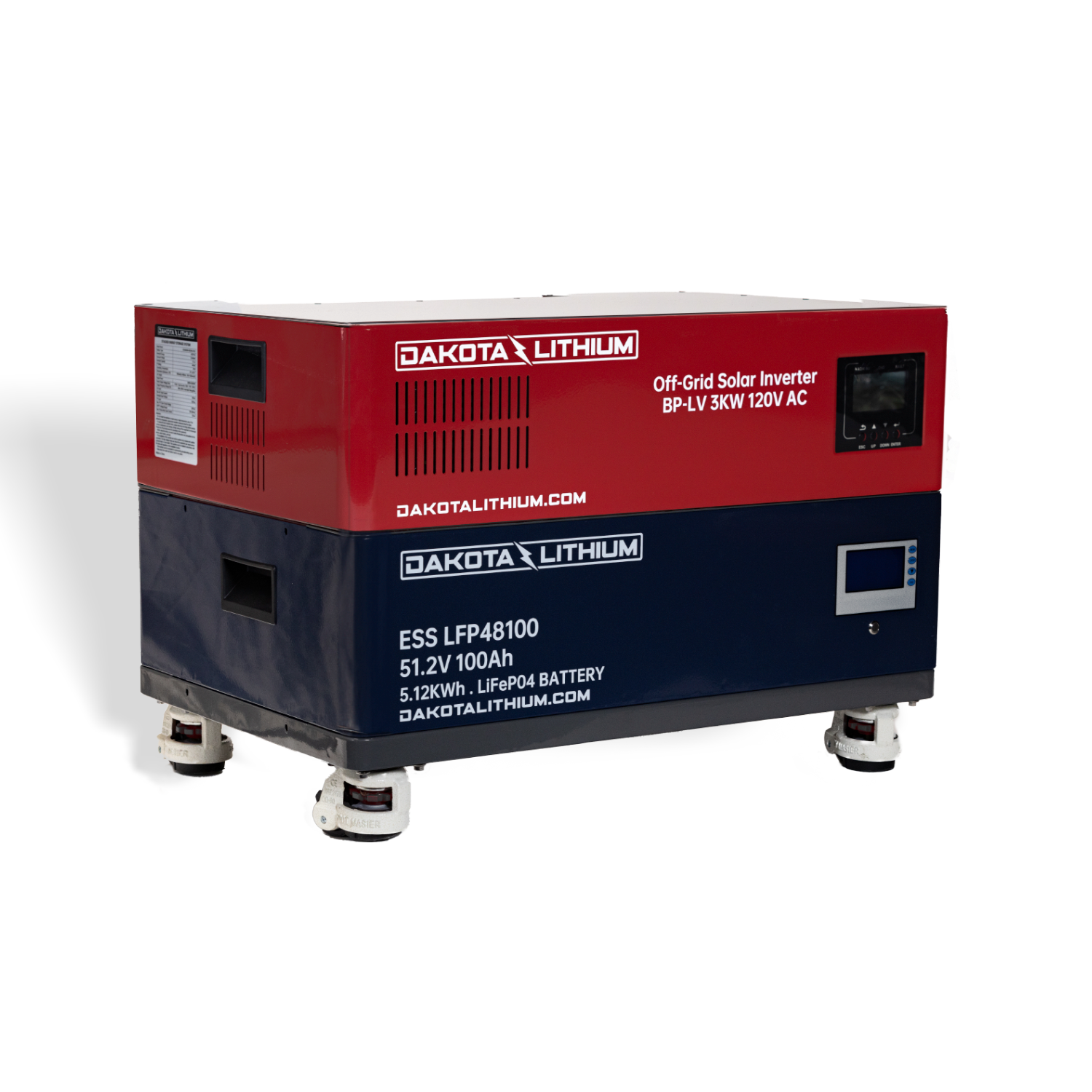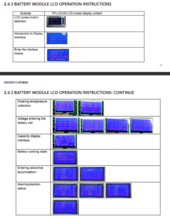padom
New Member
Ok, I am fine with doing my own wiring, installation, etc. I do my own electrical, wiring, panels, meter boxes, etc. and I own a commercial IT company 18+ years.
I have done multiple very small setups I designed and use for solar powered on pole security camera setups, remote/camping setups but nothing to run an entire house or building.
Been doing some research and reading on the forums and would like to do my first larger setup to run my detached building/shop/office.
The detached building in question has a new 100AMP sub panel that is connected to the main panel in the house.
I have the following running off this 100AMP subpanel
18,000BTU 1.5-Ton 22 SEER Mini-Split AC and Heat Pump
24U Server Rack with NVR, 5 24 and 48port POE Switches
Enterprise Routers, VOIP Server
7 Monitors
High Performance 14900k/RTX4080 workstation
4 Intel Computers
Access Control
Garage Door/Opener
Medium Size Air Compressor
Security Cameras POE
ALL LED Lighting
Small Pool Pump running 18000 gallon above ground pool
I will get my clamp meter out and see what my max amperage draw is on the 100A panel when everything mentioned above is running
I would like to install an EG4 Hybrid inverter to connect to the 100amp grid power, connect 20KW battery bank, connect solar installed on the buildings roof and have generator connection (already have a 30amp generator outlet on outside of building for my 12,000 gas generator)...
Not sure if I should use a EG4 12KW, EG4 18KW.
I am a dealer of Dakota Lithium and I get amazing dealer pricing on their products. They have a 20KWH stackable 48V solar battery setup that I get an unreal price on. So the want/goal is to use that as my battery bank to connect to the EG4.
Dakota 5KWH-20KWH
11 Year Warranty
LiFePO4
51.2V
(I know I wont be using the inverter that it comes with). I can save about $250 getting the 20KWH battery stack without the inverter...

So, I would install the EG4 12 or 18KW, connect the 100amp grid feed from house into the EG4, connect my 100amp load center panel to the EG4, connect the solar array on the roof to the EG4, connect the 30AMP gas generator outlet feed and then connect the Dakota battery stack to the EG4.
Purpose of this thread is to understand some of the numbers on the EG4 hybrid inverters from EG4 themselves, or some of you that are very well experienced with these inverters..
For example, the EG4 18KW says 18000watts Max utilized solar power. So thats the max number of wattage you can connect to the MPPT inputs on the EG4, correct? So say I used 410w panels. I could connect up to 43 panels roughly to this EG4 18KW? Am I understanding that correctly? (Yes, I see there are 3 MPPT inputs an each has a max AMP rating so the panels would have to be split up between the 3 MPPT inputs right?)
Battery input. I need some clarification on that. Does the EG4 18KW refer to the 18000watt max PV input? So, can I connect my 20KWH Dakota battery stack to this EG4 18KW no problem? Is there a limit on how many KWH of battery capacity I can connect to it?
I also dont understand the AC Grib Power output numbers when reading the spec sheet. which states 240V@12000watts. So, can I only power a maximum of 12000watts connected to my 100amp load center panel?
Any clarification on some of these questions or recommendations or comments on what Im desinging/looking to setup would be appreciated.
Thank you in advance.
End results goal is to run this detached building/office off solar and battery and have grid power kick in when needed and have battery backup for the building in the event of a power outage....
I have done multiple very small setups I designed and use for solar powered on pole security camera setups, remote/camping setups but nothing to run an entire house or building.
Been doing some research and reading on the forums and would like to do my first larger setup to run my detached building/shop/office.
The detached building in question has a new 100AMP sub panel that is connected to the main panel in the house.
I have the following running off this 100AMP subpanel
18,000BTU 1.5-Ton 22 SEER Mini-Split AC and Heat Pump
24U Server Rack with NVR, 5 24 and 48port POE Switches
Enterprise Routers, VOIP Server
7 Monitors
High Performance 14900k/RTX4080 workstation
4 Intel Computers
Access Control
Garage Door/Opener
Medium Size Air Compressor
Security Cameras POE
ALL LED Lighting
Small Pool Pump running 18000 gallon above ground pool
I will get my clamp meter out and see what my max amperage draw is on the 100A panel when everything mentioned above is running
I would like to install an EG4 Hybrid inverter to connect to the 100amp grid power, connect 20KW battery bank, connect solar installed on the buildings roof and have generator connection (already have a 30amp generator outlet on outside of building for my 12,000 gas generator)...
Not sure if I should use a EG4 12KW, EG4 18KW.
I am a dealer of Dakota Lithium and I get amazing dealer pricing on their products. They have a 20KWH stackable 48V solar battery setup that I get an unreal price on. So the want/goal is to use that as my battery bank to connect to the EG4.
Dakota 5KWH-20KWH
11 Year Warranty
LiFePO4
51.2V
(I know I wont be using the inverter that it comes with). I can save about $250 getting the 20KWH battery stack without the inverter...

Dakota Lithium Home Backup Power & Solar Energy Storage System, 5-20 KWh Battery, 3,000W Inverter
Built for reliable power outage protection, the Dakota Lithium Home Backup Power & Solar Energy Storage System makes going off grid easy. Learn more.
dakotalithium.com
So, I would install the EG4 12 or 18KW, connect the 100amp grid feed from house into the EG4, connect my 100amp load center panel to the EG4, connect the solar array on the roof to the EG4, connect the 30AMP gas generator outlet feed and then connect the Dakota battery stack to the EG4.
Purpose of this thread is to understand some of the numbers on the EG4 hybrid inverters from EG4 themselves, or some of you that are very well experienced with these inverters..
For example, the EG4 18KW says 18000watts Max utilized solar power. So thats the max number of wattage you can connect to the MPPT inputs on the EG4, correct? So say I used 410w panels. I could connect up to 43 panels roughly to this EG4 18KW? Am I understanding that correctly? (Yes, I see there are 3 MPPT inputs an each has a max AMP rating so the panels would have to be split up between the 3 MPPT inputs right?)
Battery input. I need some clarification on that. Does the EG4 18KW refer to the 18000watt max PV input? So, can I connect my 20KWH Dakota battery stack to this EG4 18KW no problem? Is there a limit on how many KWH of battery capacity I can connect to it?
I also dont understand the AC Grib Power output numbers when reading the spec sheet. which states 240V@12000watts. So, can I only power a maximum of 12000watts connected to my 100amp load center panel?
Any clarification on some of these questions or recommendations or comments on what Im desinging/looking to setup would be appreciated.
Thank you in advance.
End results goal is to run this detached building/office off solar and battery and have grid power kick in when needed and have battery backup for the building in the event of a power outage....
Last edited:







